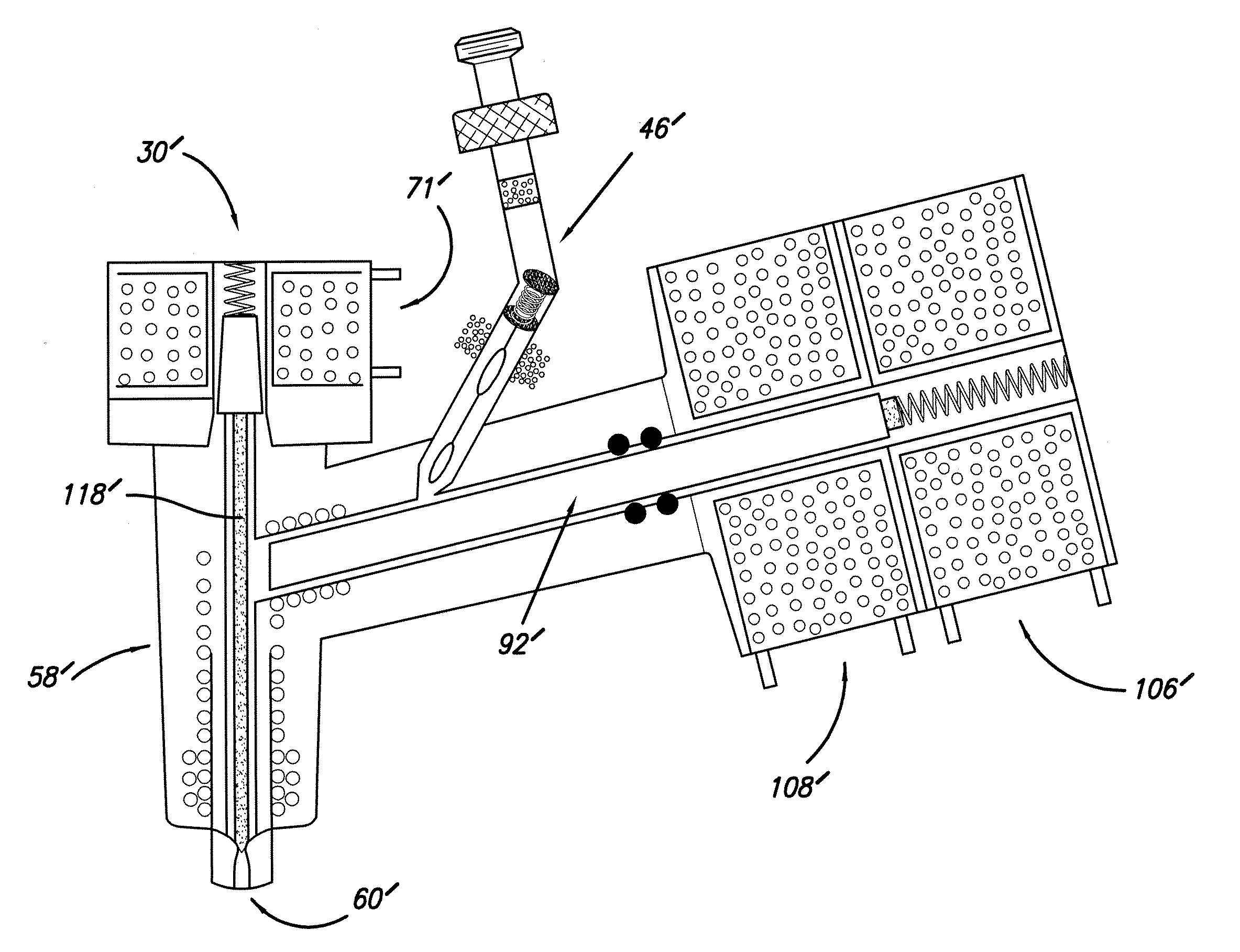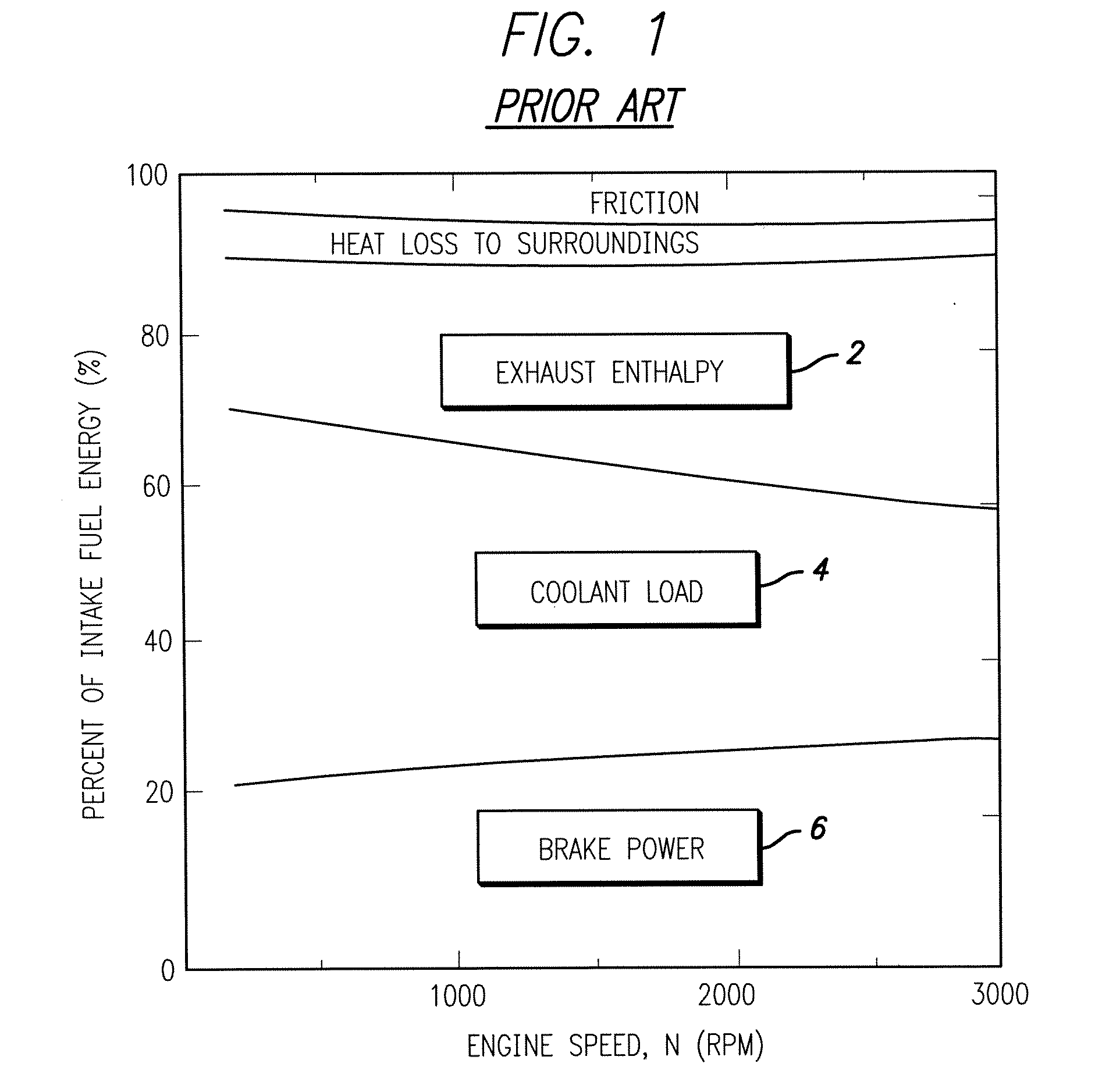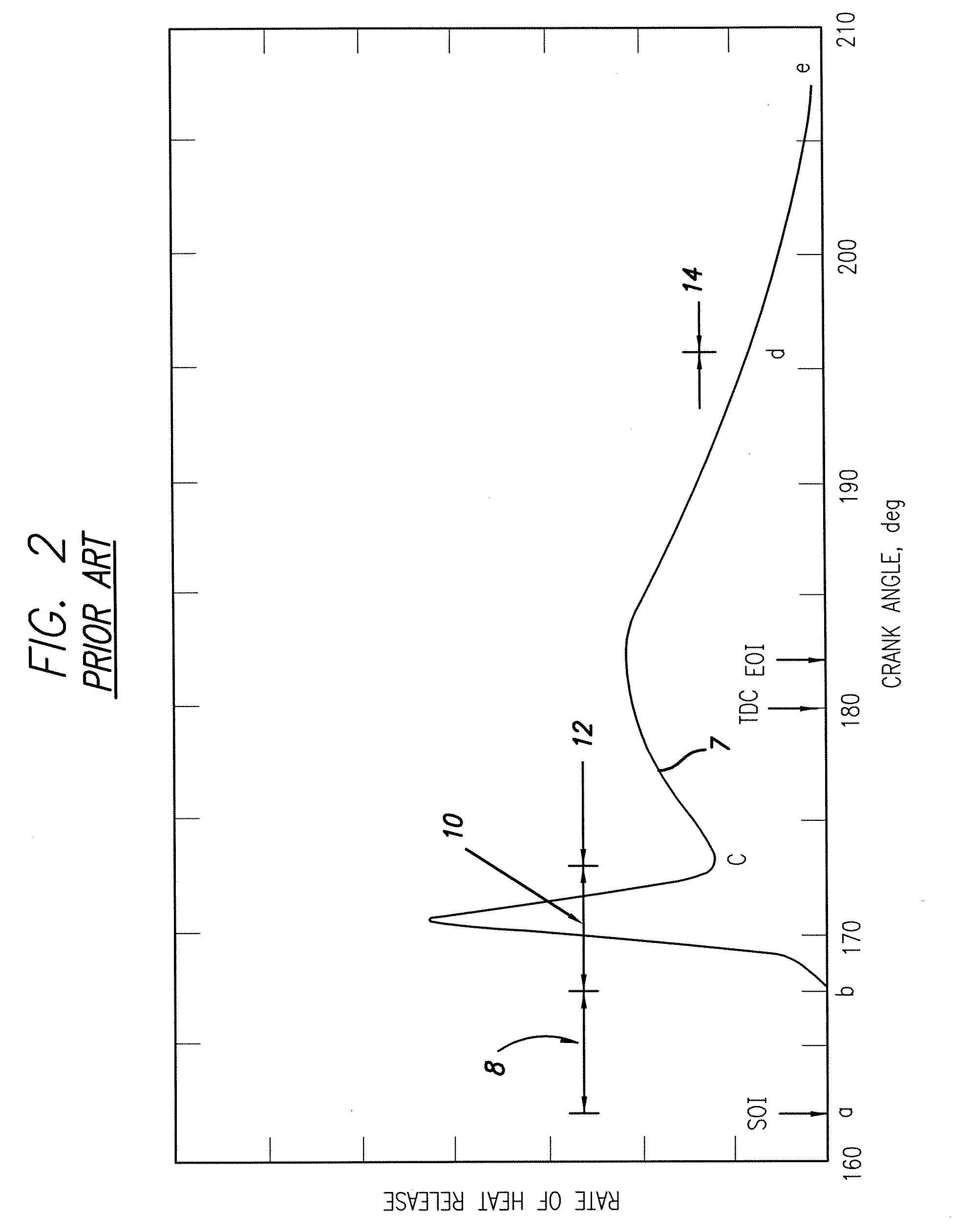Heated catalyzed fuel injector for injection ignition engines
a fuel injector and catalytic technology, which is applied in the direction of machines/engines, combustion air/fuel air treatment, mechanical equipment, etc., can solve the problems of inability to maintain a liquid phase or re-compress to a liquid phase, inability to maintain a liquid phase, and up to the practical compression limit of internal combustion engines, so as to reduce the energy content of the resultant fuel, reduce the need for heat input, and promote carbon formation
- Summary
- Abstract
- Description
- Claims
- Application Information
AI Technical Summary
Benefits of technology
Problems solved by technology
Method used
Image
Examples
case ii
[0067]In Case II, the internal nickel molybdenum catalyst of the fuel injector was activated by operating the injector body at a temperature of approximately 750° F. In operation, the engine instantly fired and accelerated rapidly over a broad range of timing conditions. A preferred electronic timing was determined to be about 0.7 ms before top dead center, and the preferred timing was not sensitive to engine warm up. In addition, exhaust gas temperature was substantially lower than that found in Case I, indicating higher engine efficiency.
[0068]In Cases III and IV, the fuel mixture was changed to approximately 30% laboratory cetane, 60% heptane, and 10% ethanol by volume. In Case III (similar to Case I), the diesel engine including a fuel injector of the invention was tested under room temperature injector operation (i.e., not under heated conditions). At room temperature, the engine would not operate with this fuel mix.
[0069]In Case IV (similar to Case II), the internal nickel mol...
PUM
 Login to View More
Login to View More Abstract
Description
Claims
Application Information
 Login to View More
Login to View More - R&D
- Intellectual Property
- Life Sciences
- Materials
- Tech Scout
- Unparalleled Data Quality
- Higher Quality Content
- 60% Fewer Hallucinations
Browse by: Latest US Patents, China's latest patents, Technical Efficacy Thesaurus, Application Domain, Technology Topic, Popular Technical Reports.
© 2025 PatSnap. All rights reserved.Legal|Privacy policy|Modern Slavery Act Transparency Statement|Sitemap|About US| Contact US: help@patsnap.com



